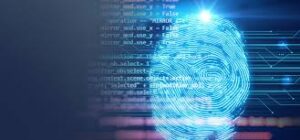Protecting Our Data and Privacy in the Age of AI
As technology advances and cyber threats become increasingly sophisticated, AI-powered cybersecurity has emerged as a potential solution to the growing problem of cyber attacks. However, as with any technology, AI also poses risks and challenges that must be carefully considered and addressed.
The promise of AI-powered cybersecurity is that it can detect and respond to threats much faster and more accurately than human analysts. AI algorithms can analyze vast amounts of data in real-time and identify patterns that indicate malicious activity. They can also learn from past attacks and adapt their responses to new threats.
However, the use of AI in cybersecurity also raises concerns about its potential for misuse or unintended consequences. Here are some of the key risks associated with AI-powered cybersecurity:
Bias and Discrimination
One of the biggest risks of AI-powered cybersecurity is the potential for bias and discrimination. AI algorithms are only as good as the data they are trained on, and if that data is biased or incomplete, the algorithm will reflect those biases. This can lead to false positives or false negatives, which can be damaging to individuals or organizations.
For example, if an AI system is trained on data that is biased against certain groups, it may flag innocent individuals as potential threats simply because they belong to those groups. This can lead to discrimination and violations of civil liberties.

To mitigate this risk, it is important to ensure that AI systems are trained on unbiased and diverse data sets. This requires careful monitoring and auditing of the data used to train the algorithms.
Adversarial Attacks
Another risk of AI-powered cybersecurity is the potential for adversarial attacks. Adversarial attacks are a type of cyber attack that specifically target AI systems. The goal of these attacks is to manipulate the AI system into making incorrect decisions or providing false information.
For example, an attacker might feed misleading data into an AI system to trick it into flagging a legitimate user as a potential threat. Adversarial attacks can be difficult to detect and prevent because they are specifically designed to exploit weaknesses in the AI system.
To mitigate this risk, AI systems must be designed with robust security measures that can detect and prevent adversarial attacks. This requires ongoing research and development in the field of AI cybersecurity.
Lack of Transparency
AI algorithms can be difficult to understand and interpret, which can create a lack of transparency in AI-powered cybersecurity. This lack of transparency can make it difficult for individuals and organizations to trust AI systems and understand how they are making decisions.
For example, if an AI system flags an individual as a potential threat, that individual may want to know why they were flagged and what criteria were used to make that decision. Without transparency, it can be difficult to provide that information.
To address this risk, AI systems must be designed with transparency in mind. This requires clear documentation of how the algorithms are trained and how they make decisions. It also requires ongoing monitoring and auditing to ensure that the algorithms are operating as intended.
Overreliance on AI
Finally, there is a risk that organizations may become over-reliant on AI-powered cybersecurity and neglect other important aspects of cybersecurity. While AI can be a powerful tool for detecting and responding to threats, it cannot replace the need for good security practices, such as strong passwords, regular software updates, and employee training.
To mitigate this risk, organizations must ensure that they have a comprehensive cybersecurity strategy that includes both AI-powered tools and traditional security measures. This requires ongoing education and training for employees, as well as regular assessments and audits of the organization’s security posture.
Conclusion
AI-powered cybersecurity has the potential to revolutionize the way we protect our data and privacy from cyber threats. However, as with any technology, it also poses risks and challenges that must be carefully considered and addressed.
To ensure that AI-powered cybersecurity is effective and trustworthy, it is important to prioritize transparency, diversity and bias-free data, robust security measures, and a comprehensive cybersecurity strategy. By doing so, we can reap the benefits of AI while minimizing the risks and ensuring that our data and privacy are protected in the age of technology.
As the field of AI cybersecurity continues to evolve, it will be important for researchers, policymakers, and organizations to collaborate and share best practices to ensure that we are making the most of this powerful technology while avoiding unintended consequences. With careful consideration and planning, AI-powered cybersecurity can help us build a safer and more secure digital future.

However, it is also important to recognize that AI-powered cybersecurity is not a silver bullet solution. While AI algorithms can analyze vast amounts of data and detect patterns that human analysts might miss, they are not infallible. Adversarial attacks and other vulnerabilities can still be exploited by determined attackers, and there will always be a need for human oversight and intervention.
Additionally, the use of AI in cybersecurity also raises ethical and legal questions that must be addressed. For example, how can we ensure that the use of AI in cybersecurity does not infringe upon individual rights or violate privacy laws? How can we balance the need for security with the need for transparency and accountability?
As with any emerging technology, it is important for policymakers, legal experts, and civil society to engage in informed debate and dialogue to address these issues and ensure that the use of AI in cybersecurity is ethical, transparent, and in line with legal and societal norms.
AI-powered cybersecurity has the potential to be a game-changer in the fight against cyber threats, but it also poses risks and challenges that must be carefully considered and addressed. By prioritizing transparency, diversity and bias-free data, robust security measures, and a comprehensive cybersecurity strategy, we can ensure that AI is used to its fullest potential while minimizing the risks and protecting our data and privacy in the age of technology. As we move forward, it is important to engage in informed debate and dialogue to address the ethical and legal questions raised by the use of AI in cybersecurity and ensure that it is used in an ethical and transparent manner.
















